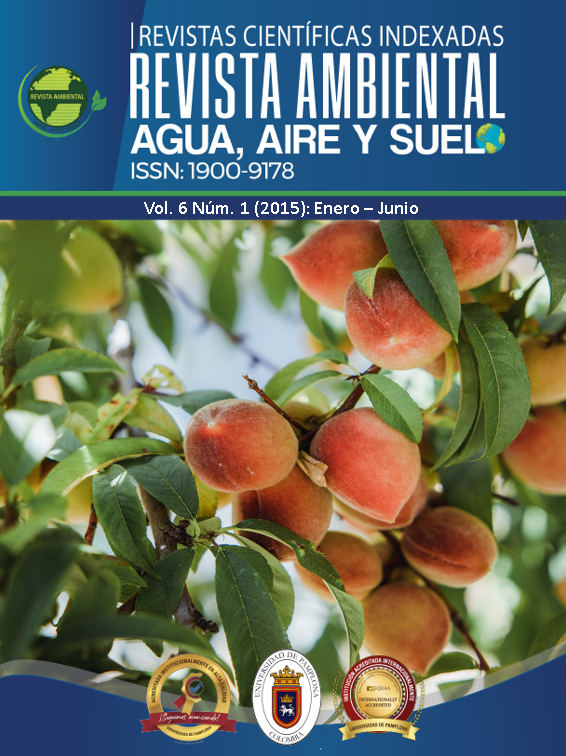Comagüeta Lagoon: regulating climate change
DOI:
https://doi.org/10.24054/aaas.v6i1.812Keywords:
Ambiental, Desarrollo, Cambio ClimáticoAbstract
The functionality of the lagoon is vital for humans and environmental regulation, as it serves as a source of water, recharges aquifers, and acts as a reservoir of biological and cultural diversity, among other things. It also plays an important role in possible responses to climate change, such as nutrient cycling, water storage, self-purification of contaminated water, and mitigation of floods and droughts. The lack of technological knowledge among farmers in the Presidente district of the municipality of Chitagá has led to the loss of the Comagüeta lagoon landscape, causing an increase in nitrogen and phosphorus concentrations, a decrease in available oxygen, and eutrophication, seriously altering the ecosystem. This document presents a literature review on the importance of implementing a sustainable solution to the pollution problems caused by aquaculture industry discharges into the lagoon and the relevance of conserving the lagoon ecosystem as a buffer zone for local climate change.
Downloads
References
Beveridge, M.C.M. (1996). Cage Aquaculture (Second Edition). Fishing News Book, Oxford, 346 pp.
Buschmann, A. H. (2001). Impacto ambiental de la acuicultura: el estado de la investigación en Chile y el mundo, un análisis bibliográfico de los avances y restricciones para una producción sustentable en los sistemas acuáticos. Departamento de Acuicultura, Universidad de Los Lagos, Osorno, Chile.
Cruz, S., Diana, C., & Rivera, M. E. (2014). Distribución del recurso hídrico de la microcuenca La Quiña, departamento de Boyacá, Colombia. Revista Ambiental Agua, Aire y Suelo, 5(1). Recuperado de: http://revistas.unipamplona.edu.co/ojs_viceinves/index.php/RA/article/view/469/467.
Folke, C., & Kautsky, N. (1992). Aquaculture with its environment: prospects for sustainability. Ocean & Shoreline Management, 17, 5-24.
Gallego, I., García, D., & Díaz, C. (2003). Sistema de recirculación de agua para cría de alevín de Trucha arcoíris (Oncorhynchus mykiss) y carpa común (Cyprinus carpio). En: Capítulo 7, Agua potable para comunidades rurales, reuso y tratamientos avanzados de aguas residuales domésticas. Red Iberoamericana de Potabilización y Depuración del Agua, RIPDA-CYTED.
Kautsky, N., Berg, H., Folke, C., Larsson, J., & Troell, M. (1997). Ecological footprint for assessment of resource use and development limitations in shrimp and tilapia aquaculture. Aquaculture Research, 28, 753-766.
Palacios, (2014). Análisis de la deposición atmosférica en el Valle de Sugamuxi. Revista Agua, Aire y Suelo. Citado el 13 de septiembre de 2014. Recuperado de: http://revistas.unipamplona.edu.co/ojs_viceinves/index.php/RA/article/view/458/456.
Persson, G. (1992). Eutrophication resulting from salmonid fish culture in fresh and salt waters: Scandinavian experiences. En: Nutritional Strategies & Aquaculture Waste (C.B. Cowey & C.Y. Cho, eds.), University of Guelph Press, Guelph, Ontario, pp.
Petterson, K. (1988). The mobility of phosphorus in fish food and fecals. Verhandlungen Internationale Vereinigung für Theoretish und Angewandte Limnologie, 23, 200-226.
Roa, A.L., & Cañizares, R.O. (2012). Bioremediación de aguas con fosfatos y nitratos utilizando Scenedesmus incrasssatulus inmovilizado. Bistua: Revista de la Facultad de Ciencias Básicas, 2012, 10(1), 71-79.
Salazar, M. (2006). Aplicación e importancia de las microalgas en el tratamiento de aguas residuales. Contactos, 59, 64-70.
Yie-Ru, C., Chao-Hsien, L., Chih-Yang, H., Yao-Lung, T., & Hsueh-Hsien, C. (2009). Applying GIS-based rainwater harvesting design system in the water-energy conservation scheme for large cities. 13th International Conference on Computer Supported Cooperative Work in Design, CSCWD 2009, pp. 722-727.
Downloads
Published
Issue
Section
License
Copyright (c) 2015 REVISTA AMBIENTAL AGUA, AIRE Y SUELO

This work is licensed under a Creative Commons Attribution-NonCommercial 4.0 International License.










